I used the Dell XPS 15 OLED as my main laptop for 6 months — here’s what I found
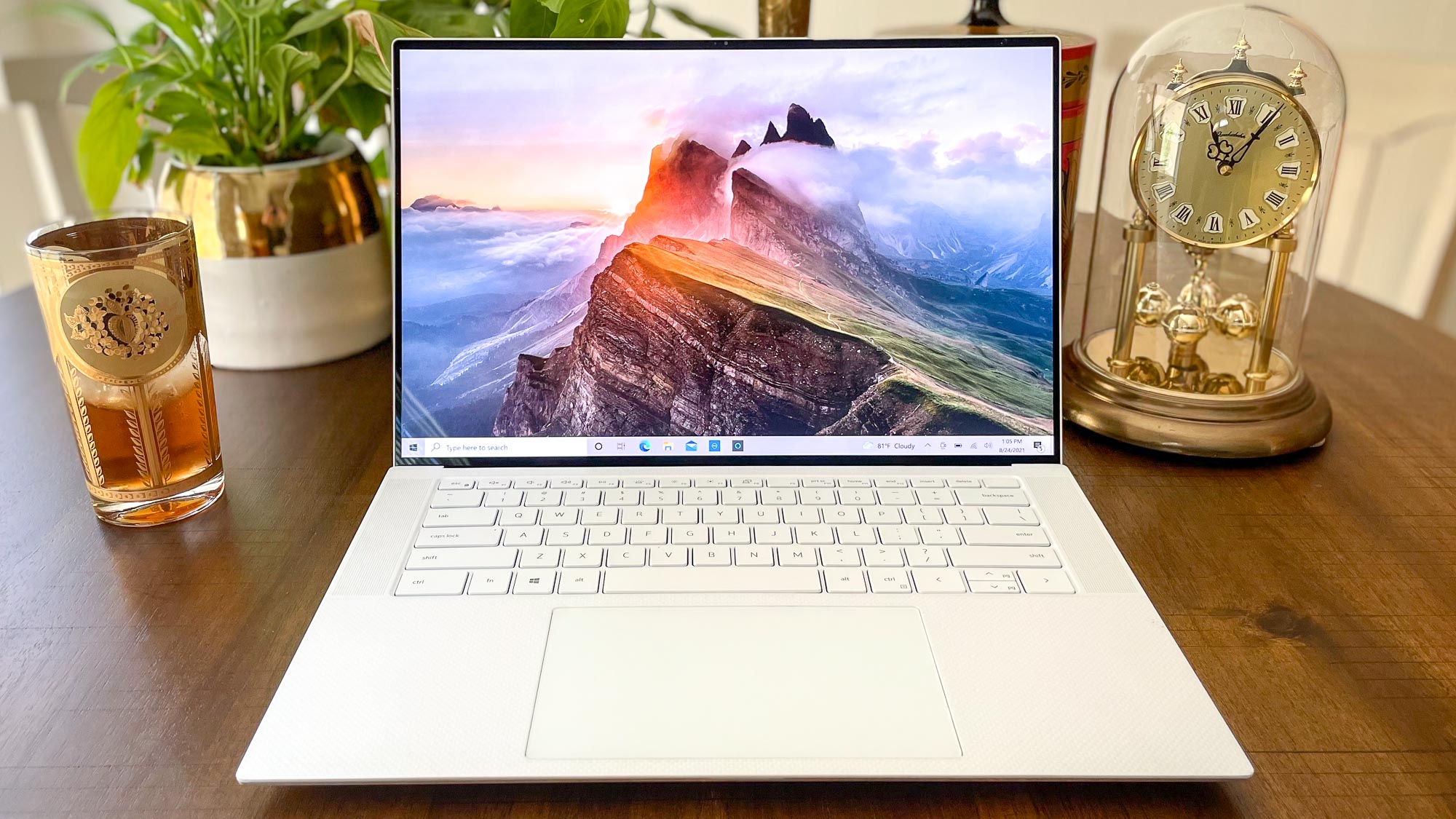
There’s a good chance that some of the best laptops of CES 2022 — including the Asus ROG Flow Z13 gaming 2-in-1 and the (vegan) leather-clad Lenovo ThinkPad Z13 — will end up on our list of the best laptops on the market.
But before that happens, I wanted to take a moment to talk about another excellent laptop that’s been on our list of the best laptops you can buy for some time: the Dell XPS 15 OLED.
If you’re not familiar, the XPS 15 OLED is a mid-sized model of Dell’s popular XPS series of ultraportables that sports a 15.6-inch 3.5K OLED touchscreen, which is a pretty solid upgrade over the FHD+ (1,920 x 1,200) LCD screen it ships with by default. Dell began selling XPS 15 models with the optional OLED upgrade last year, and after we published our Dell XPS 15 OLED review, Dell was gracious enough to let me hang onto it for another six months or so.
That’s a little out of the ordinary for us here at Tom’s Guide, as we review so many laptops (and desktops, tablets, monitors, etc.) that it’s rare to hang onto one for more than two or three months. I think that’s a good thing for you, dear reader, because it gives us plenty of hands-on experience with lots of different products on the market and helps us offer more nuanced perspectives on how those devices compare to their competitors.
But in our enthusiasm to review as many different laptops as possible, we can’t help but handicap our authority to tell you what to expect from a given device six months or a year down the road. Of course, a good deal of that depends on how you decide to use it: an entry-level XPS 15 bought last year and immediately turned into a Hackintosh is going to feel much different to use today than, say, one loaded up with games and gaming accessories by a college student who managed to convince their parents that an XPS 15 with an upgraded Nvidia GeForce RTX 3050 Ti GPU was “essential” for their college coursework.
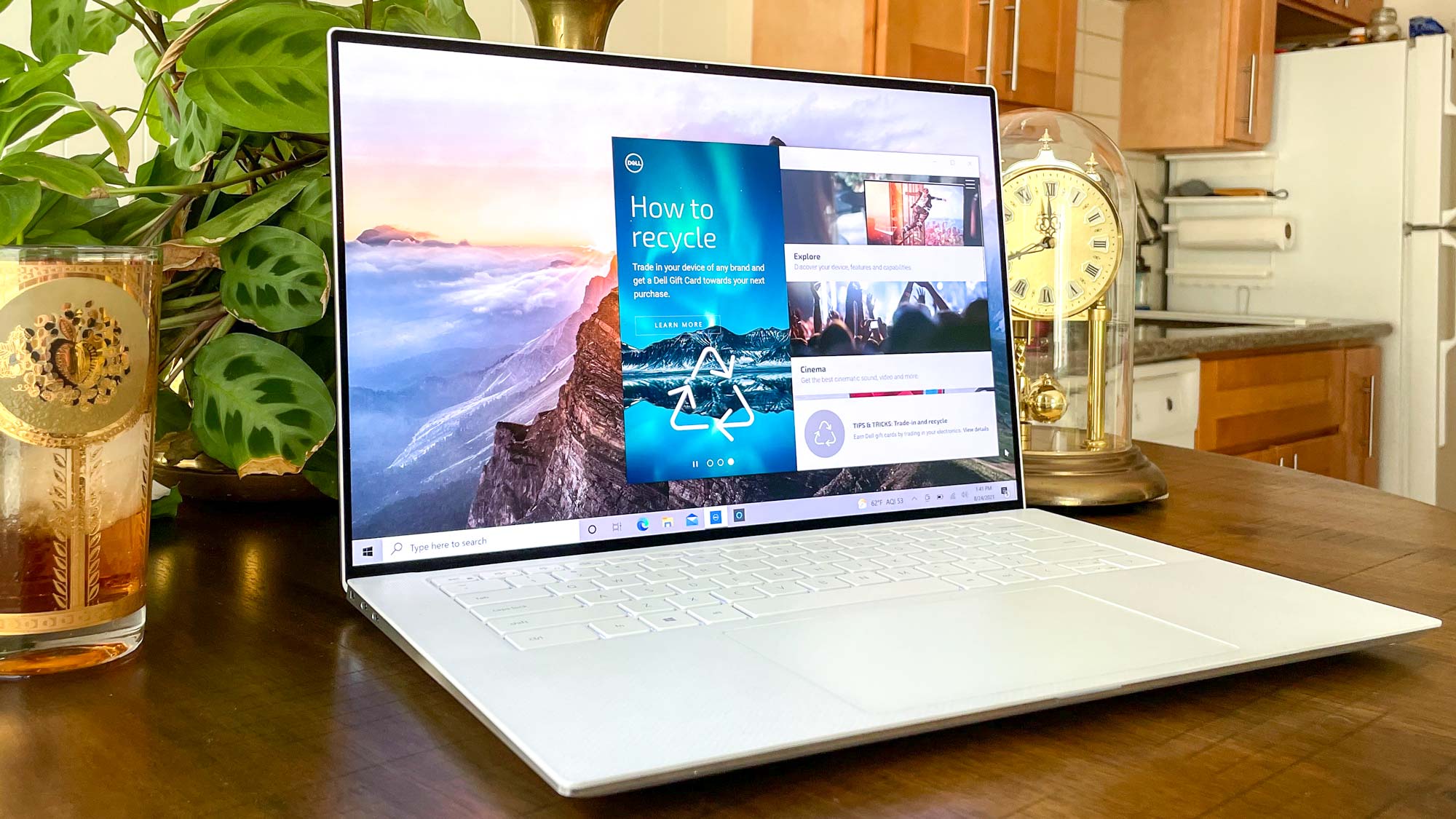
Even so, I often wish we had the luxury of spending six months to a year with every product before we publish the review. Doing so would make it harder to stay current, as laptop makers regularly refresh their products every year or three, but it would deepen our understanding and help us give you more informed reviews. Case in point: after using the Dell XPS 15 OLED as my daily driver for half a year, I’ve learned a few things that weren’t as clear to me back when we published the review.
OLED really does make a difference, even on laptops
OLED displays have been available on laptops for a little while now, but 2021 seemed to be the year they really started to become common. Dell helped lead the charge, adding an OLED option to its XPS 13 in 2020 and to its XPS 15 in 2021 – so perhaps 2022 is the year the XPS 17 finally gets one too.
Get instant access to breaking news, the hottest reviews, great deals and helpful tips.
In our Dell XPS 15 OLED review I said a lot of nice things about the 3.5K OLED display, so I’ll try not to repeat too many of them here. But what I’ve learned after looking at this screen for six months (with occasional breaks to stare at other screens of varying sizes around the pandemic bunker that is my apartment) is that once you go OLED, it’s hard to go back.
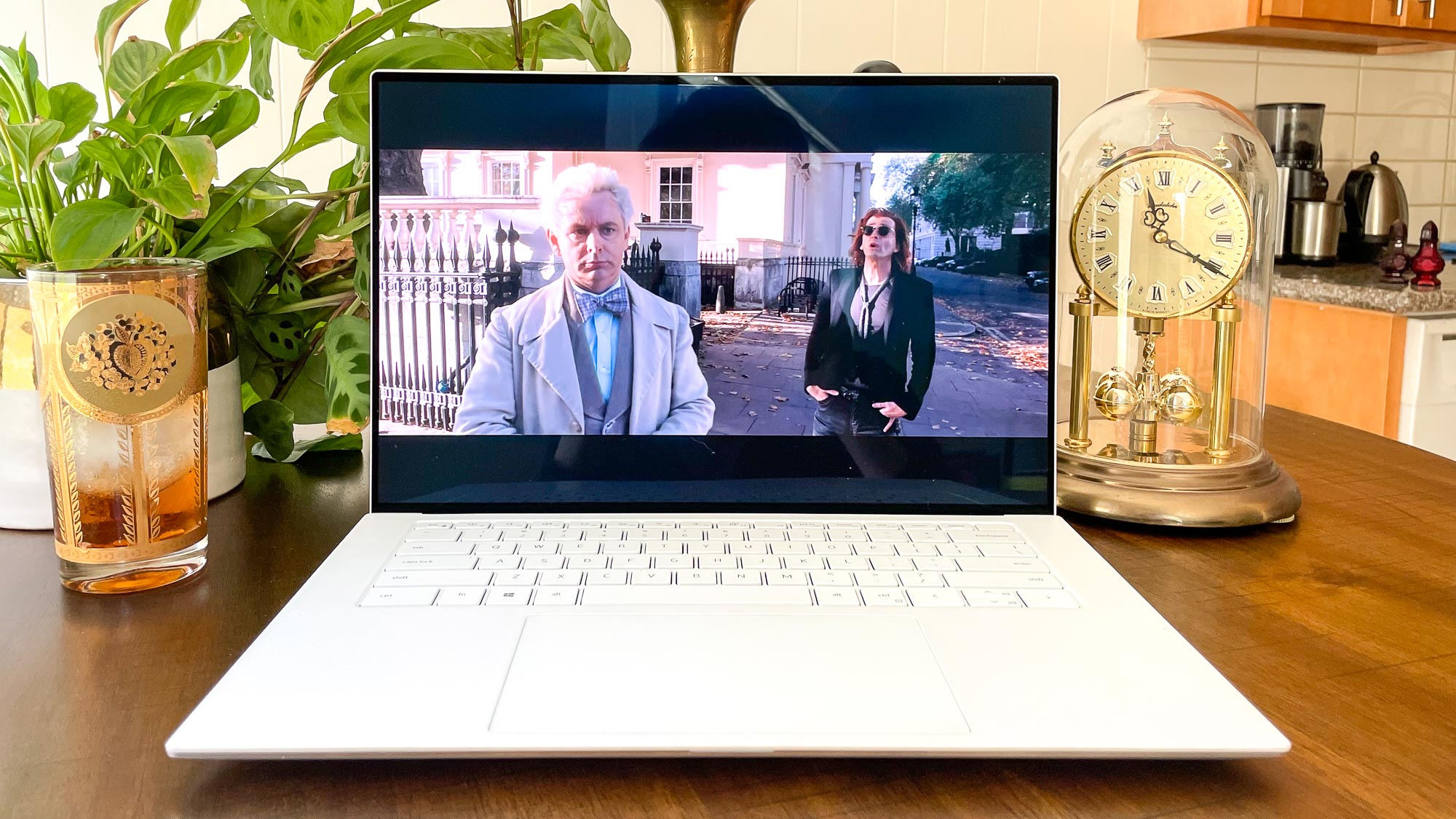
Personally, I think that further validates the decision to spend the extra cash on an OLED display upgrade. We regularly extol the virtues of OLED screens on this website, as they typically achieve much more vibrant colors, deeper blacks, and more impressive contrasts than the LED displays still attached to many computers. You can read our guide to what is OLED for a more thorough breakdown of how the tech works and why it looks so good, but in short: if you can afford it, an OLED display is a worthwhile upgrade.
Of course, if you just want a laptop for checking email, using spreadsheets, and generally getting work done on the go, an OLED upgrade probably isn’t worth it. But even on a work laptop it can be a nice feature to have, as it makes everything you look at – videos, pictures, perhaps even spreadsheets – appear more vibrant.
After six months of using an XPS 15 OLED every day, non-OLED displays look dull by comparison. It actually inspired me to upgrade my old 4K TV to an LG C1 OLED, which ended up being the best thing I bought all year. That nearly $2,000 decision was motivated primarily by my appreciation for the XPS 15’s OLED display – though the fact that the LG C1’s excellent gaming features pair well with my Xbox One X didn’t hurt either.
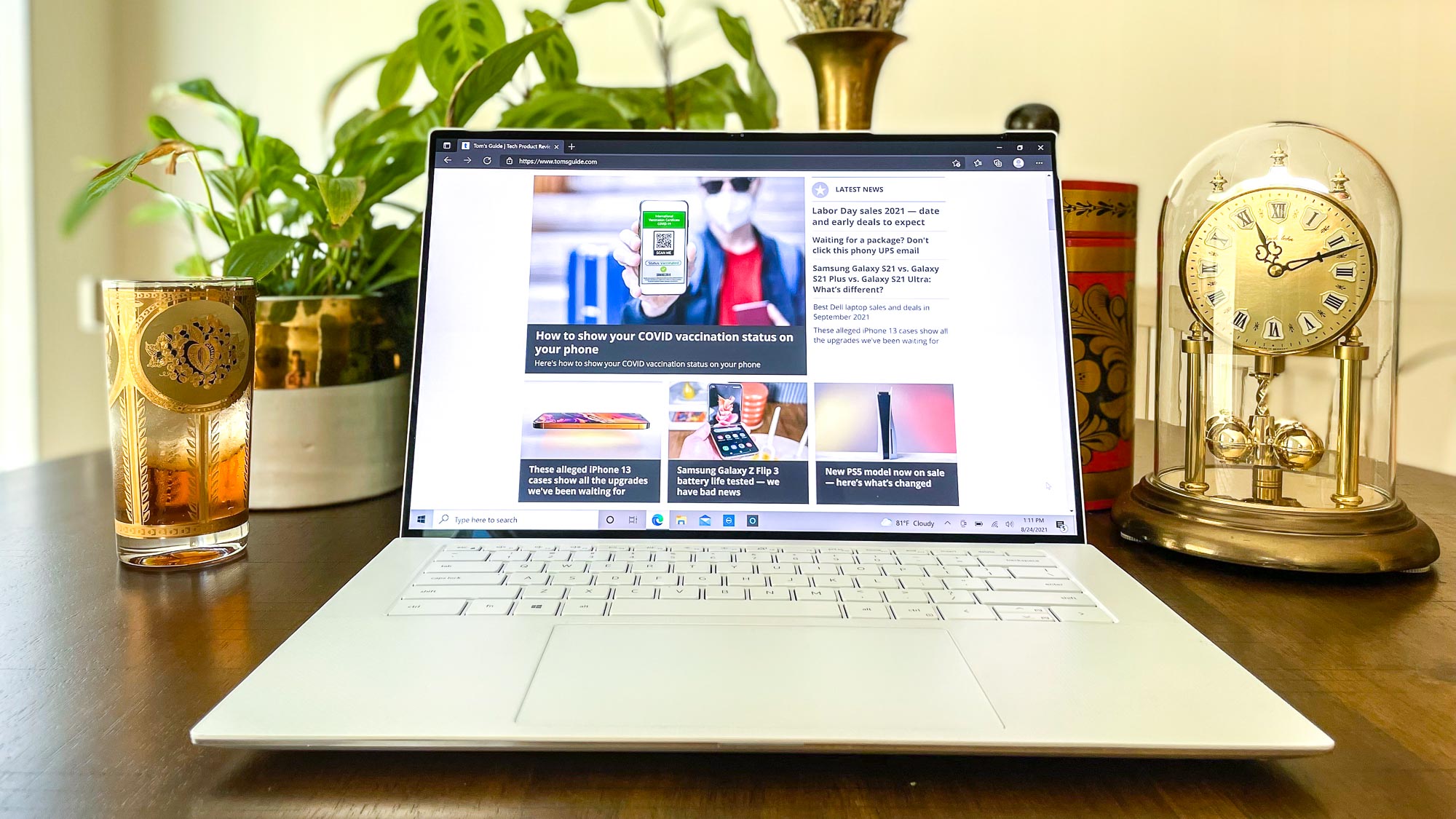
Put simply, I think you’ll be better off buying a laptop with a 1080p OLED display than a 4K non-OLED screen. Luckily the OLED display on the XPS 15 is 3.5K so you’re not stuck at 1080p, but in practice I’ve found it remarkably hard to read text or make out other fine details on the laptop’s 15.6-inch display at 3.5K resolution anyhow — which is why Windows’ built-in display scaling has been a godsend.
With a good GPU, the XPS 15 is a solid gaming machine
You know what else looks great on an OLED display? Games. Dell’s XPS laptops are typically marketed more towards students and professionals than hardcore game enthusiasts (though the XPS 17 is beefy enough to hold a spot on our list of the best gaming laptops), but in my time with the XPS 15 OLED I’ve found it to be a surprisingly good platform for playing games.
Our review unit showed up configured with an Intel Core i7-11800H, 16GB of RAM, a 512GB SSD and an Nvidia GeForce RTX 3050 Ti GPU. To buy the same model through Dell’s website would cost you about $2,000 as of this writing, which isn’t chump change – you could definitely get a solid gaming laptop for that price, and some for even cheaper, like the budget-minded Dell G15 SE.
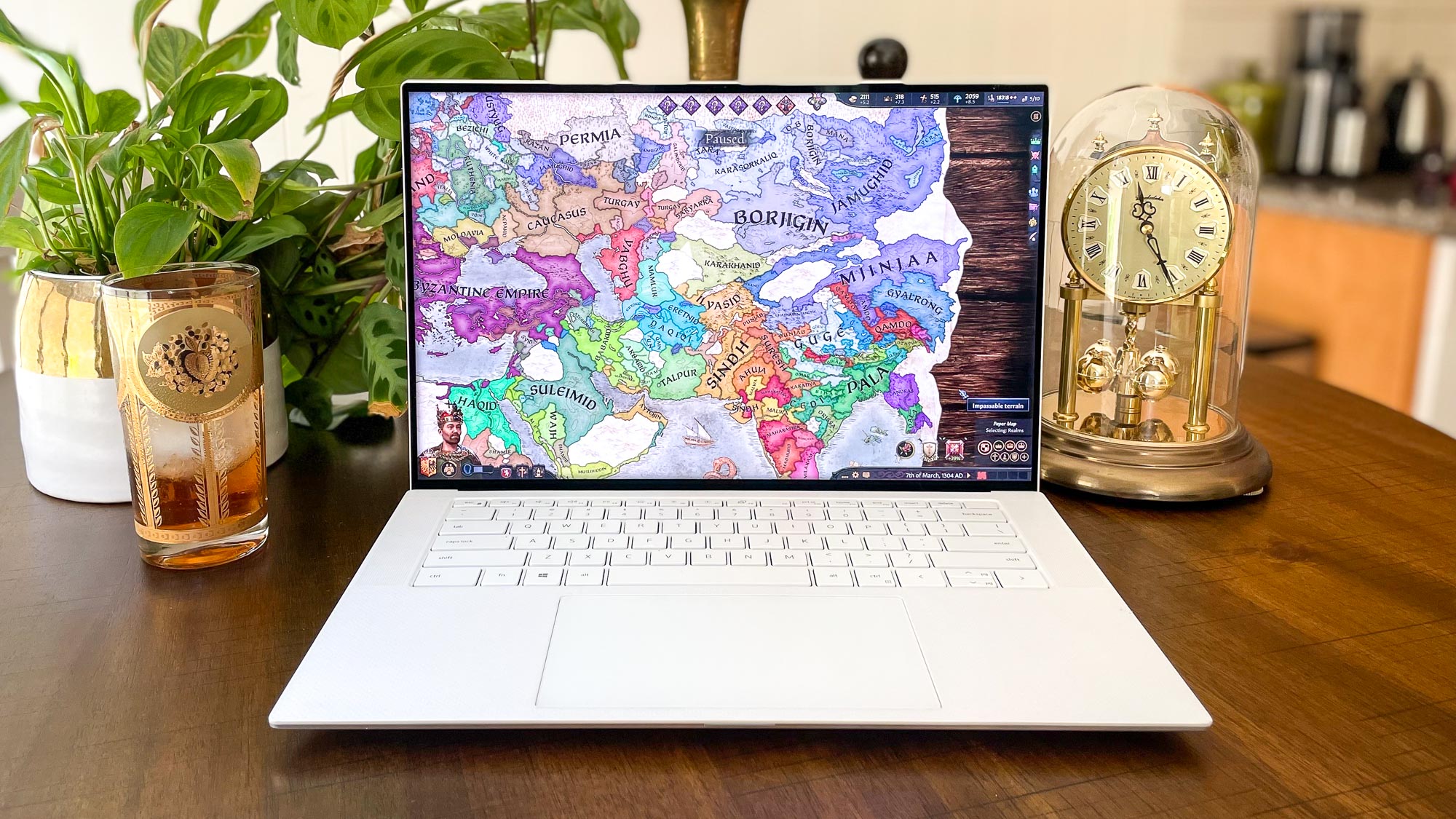
But while you can definitely get more frames per second for your dollar if you buy a dedicated gaming laptop, you’ll likely also get a heavier, uglier, louder device with a subpar keyboard and touchpad. And you almost certainly won’t get an OLED display, unless you shell out for a premium gaming laptop like the Alienware m15 R4 (2021) or the Razer Blade 17 (2021).
I’m not saying gaming laptops are a waste of money, or generally worse than a souped-up ultraportable like the XPS 15 OLED. A gaming laptop can be a wonderfully versatile alternative to a gaming PC, especially if you trick it out with your favorite mouse, keyboard and headset. Instead, I’m saying that I’ve found that a well-specced XPS 15 OLED with a 3050 Ti is remarkably good for playing all but the latest and most graphically demanding games, and they often look amazing on its eye-catching 3.5K OLED display. I was able to play games like Apex Legends, Battletech, Crusader Kings III, Inscryption, and Pathfinder: Wrath of the Righteous with graphics settings at or above normal on the XPS 15 OLED, and it had little trouble maintaining a steady 30 frames per second across the board.
That said, the XPS 15 OLED’s already middling 7-hour battery life (based on our lab testing) dropped to roughly 2 hours while playing games, so don’t expect to do a lot of gaming unplugged – you’re better off with an Asus ROG Zephyrus G14 if you want hours of laptop gaming on the go.
A good webcam really is worth it – at least during a pandemic
In closing, I just wanted to quickly highlight something else I learned while using the XPS 15 OLED for half a year: the value of a good webcam.
In our review of the XPS 15 OLED we criticized its 720p webcam for capturing video that looks grainy, washed-out, and generally unattractive. Even so, there was a time when I’d have told you that webcam quality shouldn’t be a significant factor when considering which laptop to buy, because honestly, who expects to look good on a laptop webcam anyway?

But after six months of using the XPS 15’s webcam for nearly every video call I’ve had – and I’ve had a lot, thanks to working remotely during a pandemic – I have to say how demoralizing it feels to see a blurry, unattractive vision of yourself every time you hop on a call. I doubt looking bad on video calls has had any major impact on my career or personal life, but it sure has made me feel a bit worse overall. It’s gotten so bad that I regularly hit the “turn off camera” button in Google Meet during business meetings, and I’m starting to think about buying a USB-C webcam and just using that instead.
So if you’re on the fence about a laptop like this and feel like maybe the lack of a good webcam won’t be an issue, I recommend you think twice – and consider bookmarking our list of the best webcams on the market, just in case you (like me) are tempted by the appeal of an XPS 15 OLED but don’t want to look sickly on your Zoom calls.
Verdict: 6 months later, the XPS 15 OLED is still a winner
We're preparing to review a fresh crop of 2022 laptops here at Tom's Guide, so it's time for me to send this 2021 XPS 15 OLED home to Dell. I'll be sad to see it go, as after half a year of use it's just as attractive, speedy, and comfortable as it was the day it arrived.
If it's not clear from this article or our coverage to date, I like this laptop. I've looked at a lot of 'em, and even after using it daily for months I still think the XPS 15 OLED is one of my favorite laptops of 2021, second only to the Framework Laptop.
I think if you're in the market for a Windows ultraportable and don't mind less than 10 hours of battery life, the XPS 15 remains an excellent choice. If you can afford to spend upwards of $2,500, configuring it with a discrete Nvidia GPU turns the XPS 15 into a decent gaming machine. But even just upgrading the base model with an OLED display is a great investment that will pay dividends every time you look at the screen — just watch out, or you might find yourself tempted to spend thousands of dollars upgrading every screen you own to OLED.

Alex Wawro is a lifelong tech and games enthusiast with more than a decade of experience covering both for outlets like Game Developer, Black Hat, and PC World magazine. A lifelong PC builder, he currently serves as a senior editor at Tom's Guide covering all things computing, from laptops and desktops to keyboards and mice.
